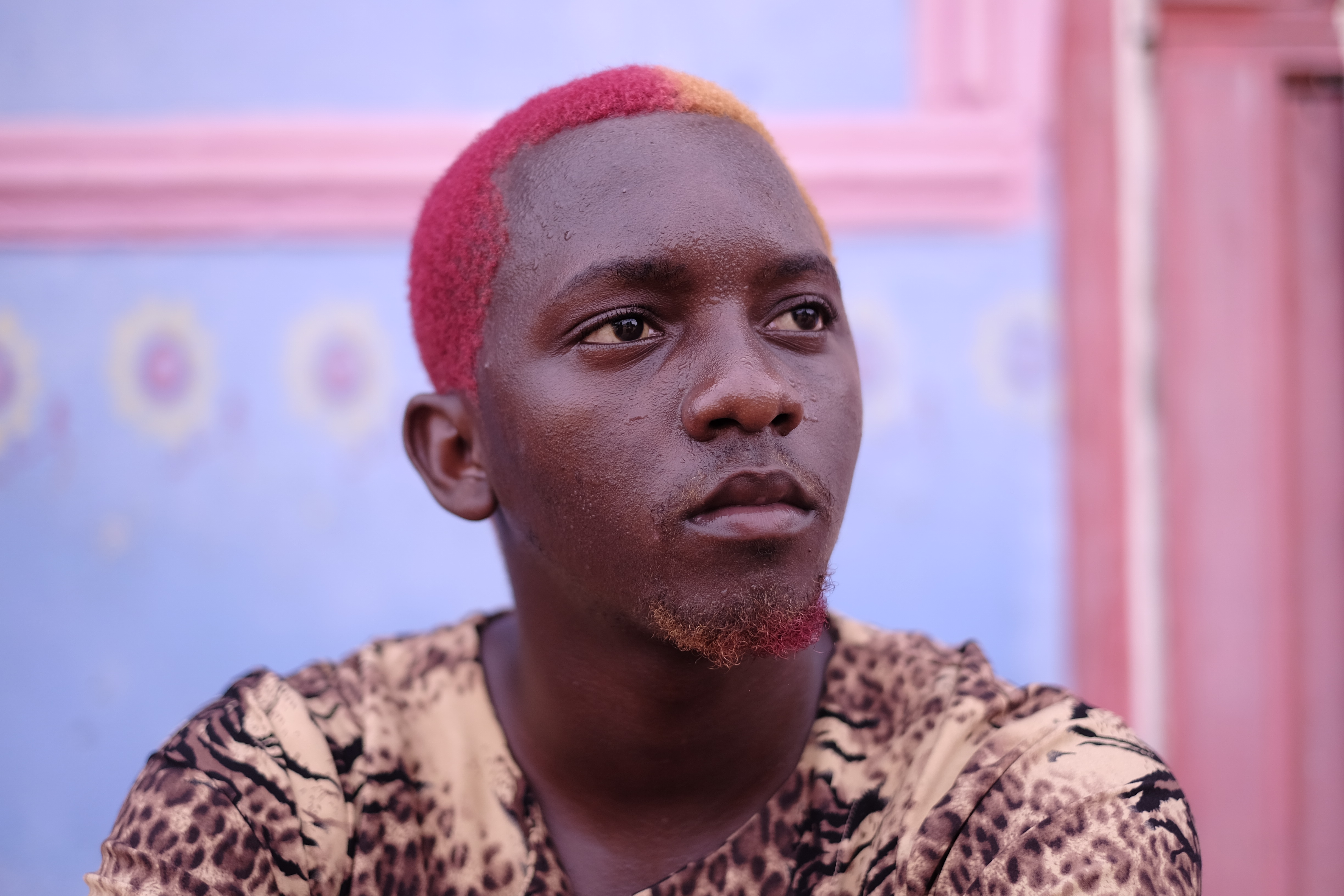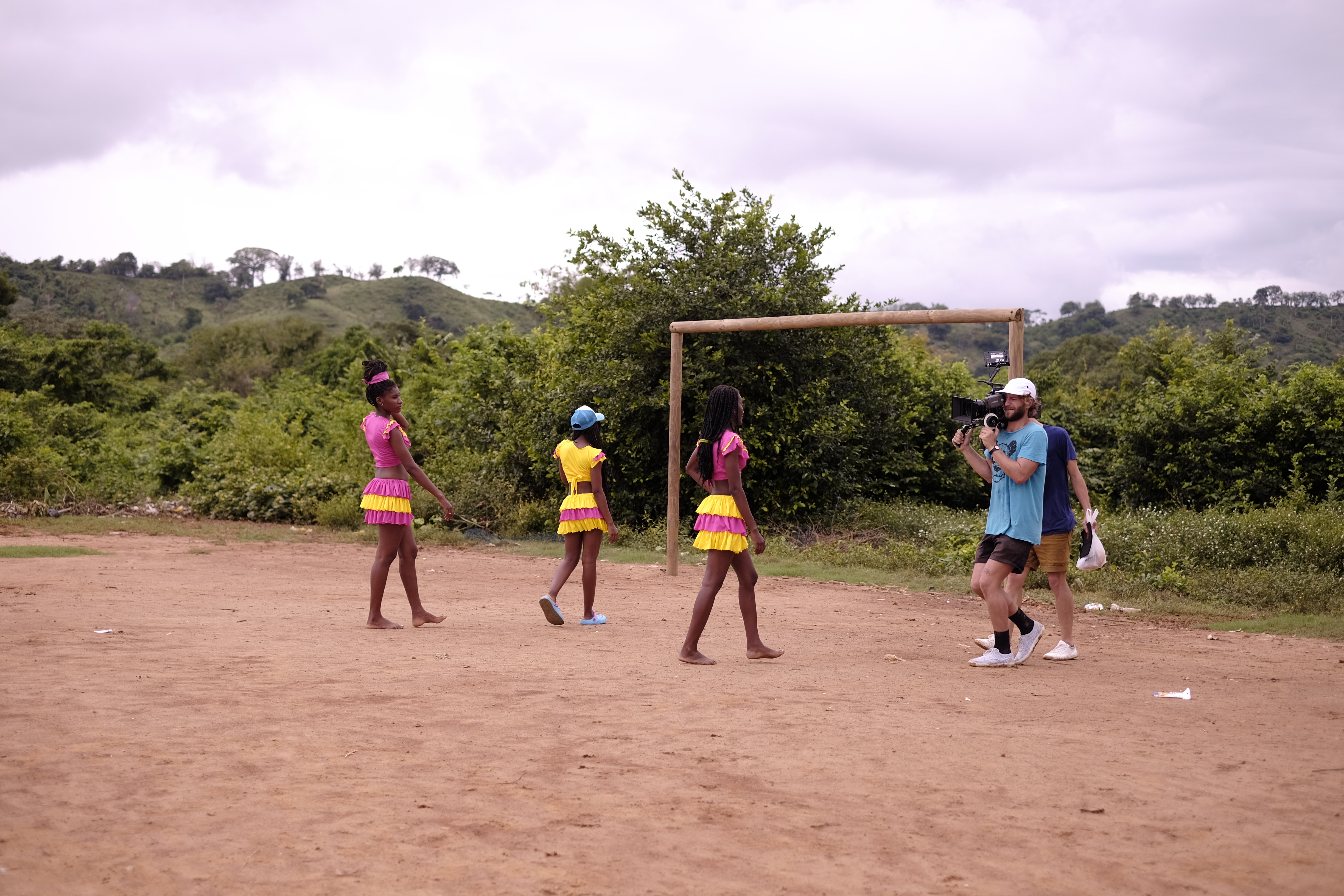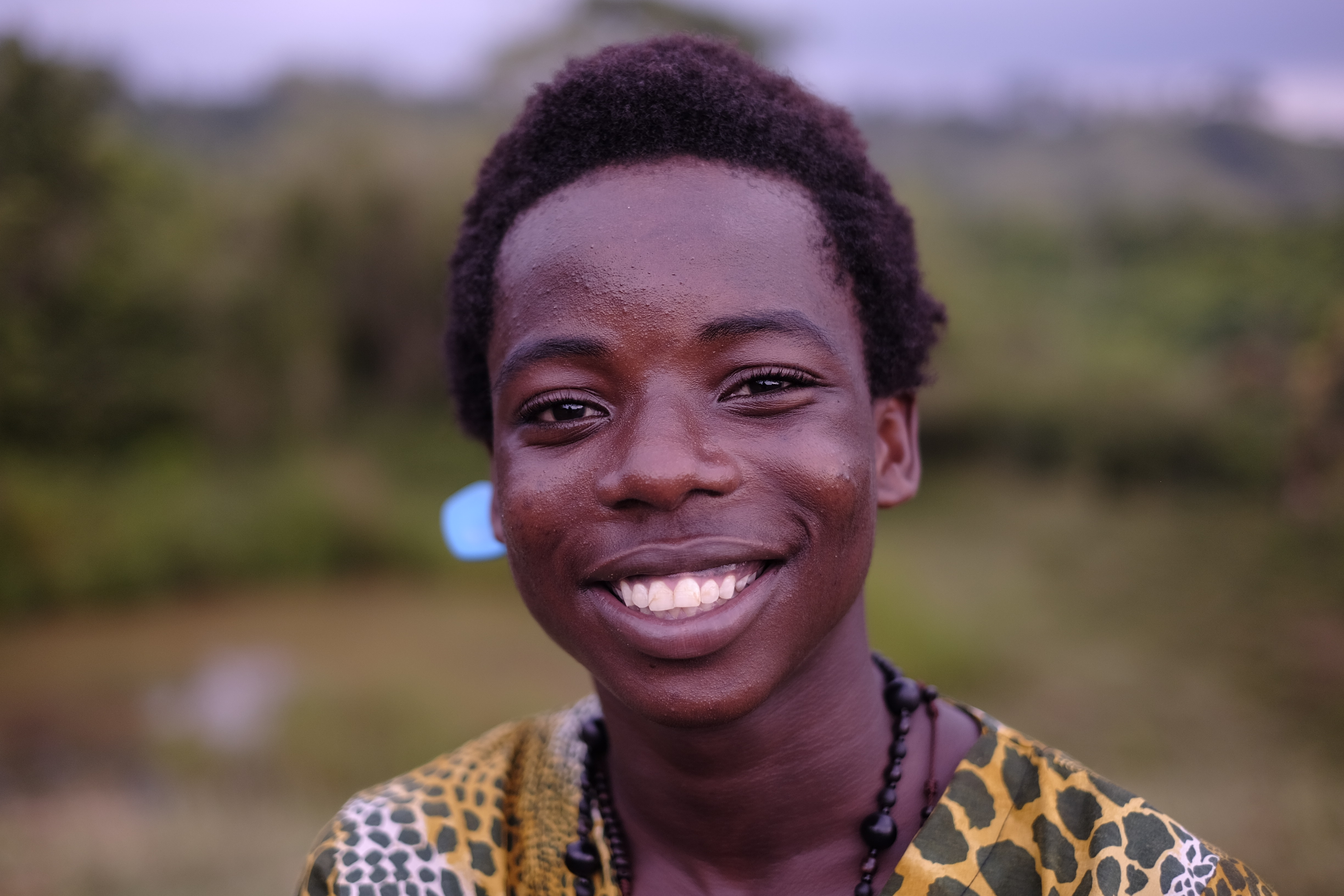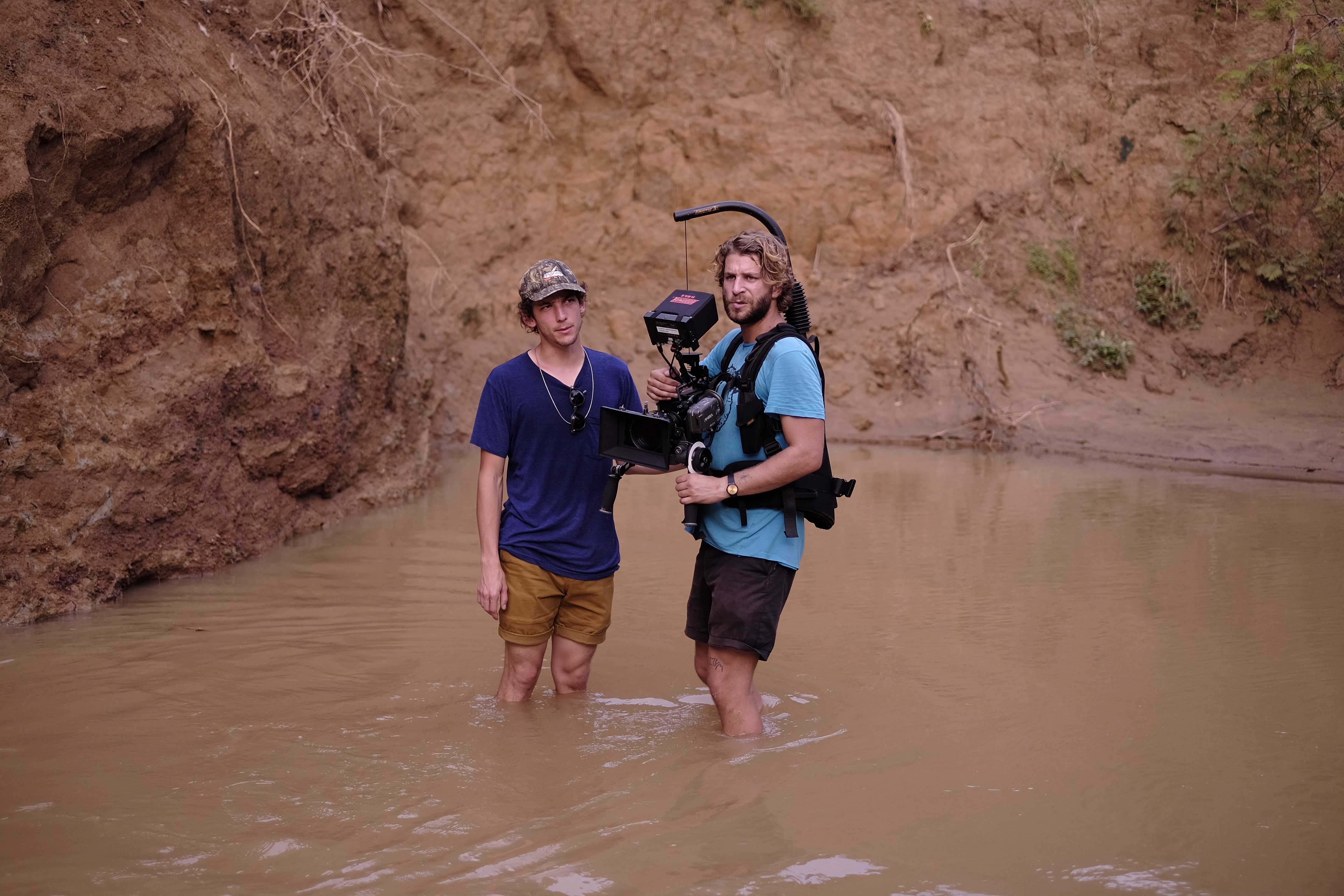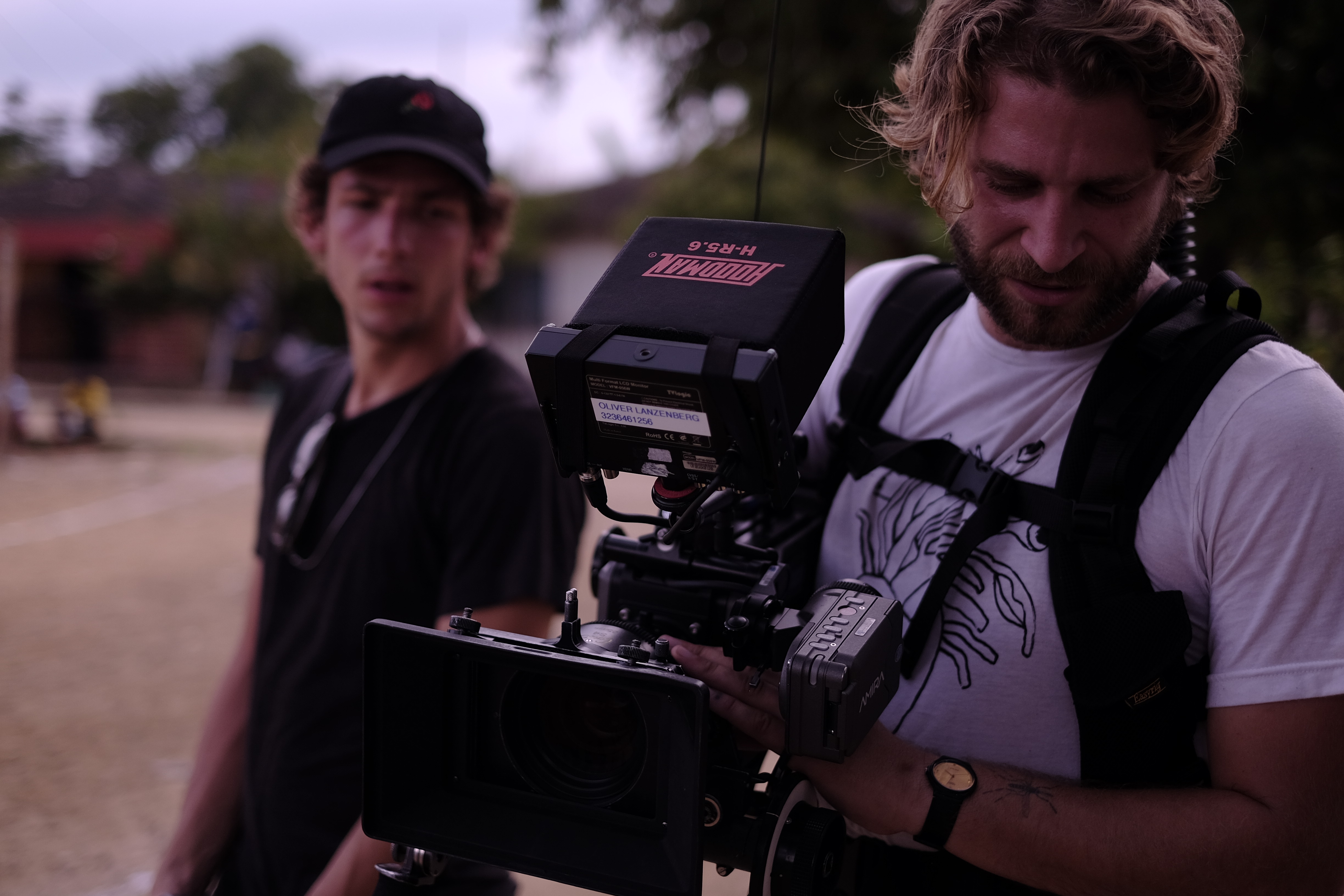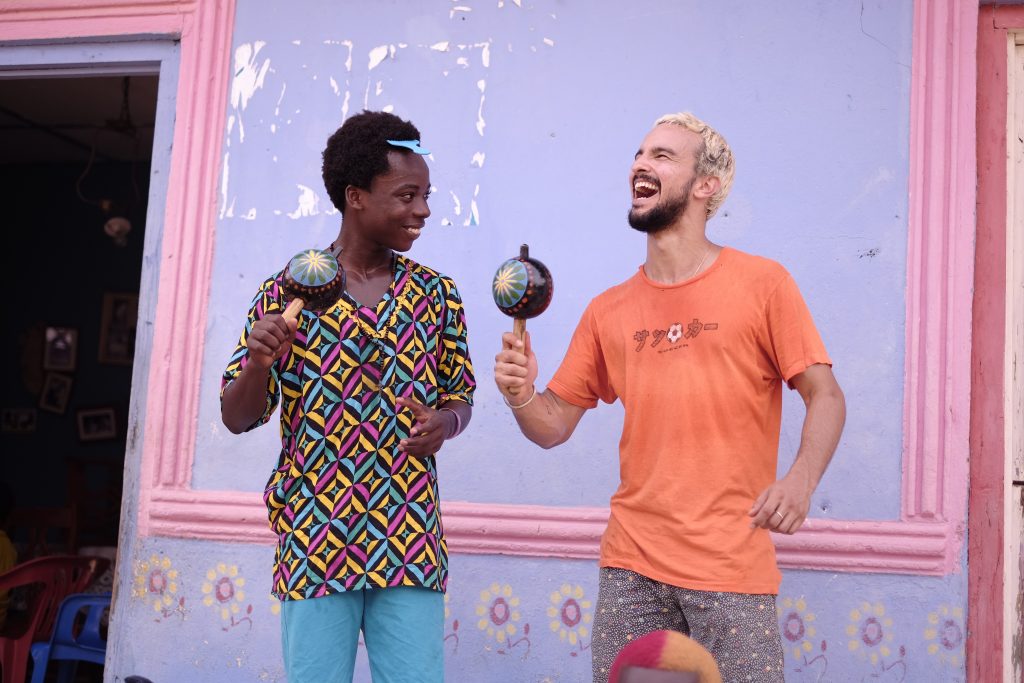San Basilio de Palenque, roughly 35 miles southeast of the former slave port of Cartagena, is considered one of the first free towns in the Americas founded by cimarrones, or runaways who constructed walled communities near the jungles of northern Colombia. Centuries later, the region still wears it African identity like a proud badge, and the heritage it has preserved for the last 400 years is reflected in every aspect of daily life, from music to medicine to language.
The region’s inimitable spirit is at the center of “Bombo Fabrika,” the latest video from French-Colombian artist Gabriel Garzón-Montano. The video was directed by Colombian filmmaker Santiago Carrasquilla, who also shot Garzón-Montano’s last video “My Balloon,” set in Cartagena and Las Islas del Rosario in Colombia. “Bombo Fabrika” unravels as a patchwork of moments and memories from a three-day trip Garzón-Montano and Carrasquilla took to Palenque last November, after seeing the region through a series of photographs taken by the artist and activist Guillermo Camacho of the arts collective Caldo De Cultivo. Camacho has been working in Palenque for almost a decade, and has built close ties to the village.
Once in Palenque, Camacho introduced the team to Kombilesa Mi, a local band featured in the video that fuses hip-hop and traditional Palenque instruments. Garzón-Montano struck up an easy friendship with the nine members of the group, and to thank them for their participation on the shoot, Carrasquilla helped Kombilesa Mi produce a video for their song “Punto” — making the experience a full-on exchange.
“They know who they are and they’ve sustained this strong culture of music.”
“I was fanning out over them — I had never seen a lot of those instruments played by people who grew up playing them, or at all,” Garzón-Montano said, adding that he got an impromptu maraca lesson from one of the Kombilesa Mi members upon arrival.
In the last few decades, Palenque has become the subject of new fascination, particularly because of its Palenquero language, a singular combination of Spanish and Bantú that has attracted both linguists and media outlets. Putting recent attention aside, Camacho is quick to point out that Palenque existed for most of its lifetime as a forgotten piece of Colombia — “un pueblo olvidado,” he repeats frequently when talking about the region. A 1987 New York Times article explained that Palenque “learned to survive in isolation because it was eventually ignored by the rest of society.”
But despite its struggles in obscurity, the culture of Palenque de San Basilio has continually flourished. Garzón-Montano saw this within minutes of reaching the village. In the sweltering heat, he heard music blasting and he saw an older man holding one hand to his waist and dancing freely to the sounds coming out of a massive speaker. “This is the shit,” Garzón-Montano thought. “I’d love to spend my mornings this way.”
“It was clear this was just a whole ‘nother way of living and a sense of community that I’ve never really seen anywhere else — and also, the most genuine smiles I’ve ever seen in my life. That really shook me to my core, the pure joy I saw everywhere. And it comes out, I think, of everyone knowing their heritage. They know who they are and they’ve sustained this strong culture of music,” Garzón-Montano told Remezcla.
Garzón-Montano, whose father lives in Colombia, also saw a connection between the content of “Bombo Fabrika” and Palenque’s history. The song, which appears on his most recent album Jardín, is about his “imaginary headquarters” and “the place from which is music is made.” Palenque, meanwhile, is also a place of origin that has spawned African rhythms and styles of music that revolve heavily around drum patterns.
“They’re both birthplaces, the song and Palenque,” Garzón-Montano said. “If you think about pop music and America, it all comes from Africa… [This video] represents one person making a pilgrimage to a place of origin and acknowledging the source of music that many of us love.”
“It was a marvelous experience that has nurtured us and strengthened us.”
Carrasquilla added that both Camacho and Palenqueros went out of their way to help lug heavy equipment up and down mountains and gather members of the community for the shoot, displaying “an unbelievable willingness to make art together.” “Bombo Fabrika” became a spontaneous collaboration that unfolded organically as the team experienced daily Palenque scenes: For example, they saw a child riding a horse through the streets and decided to incorporate him into the video; within moments, one of the members of Kombilesa Mi wrangled more children on horses to get the shot.
The final video captures the ebullience of Palenque’s people, but the scenes are also imbued with a dreamy quality. Carrasquilla explained that he wanted to show the carefree, extemporaneous nature of the entire trip.
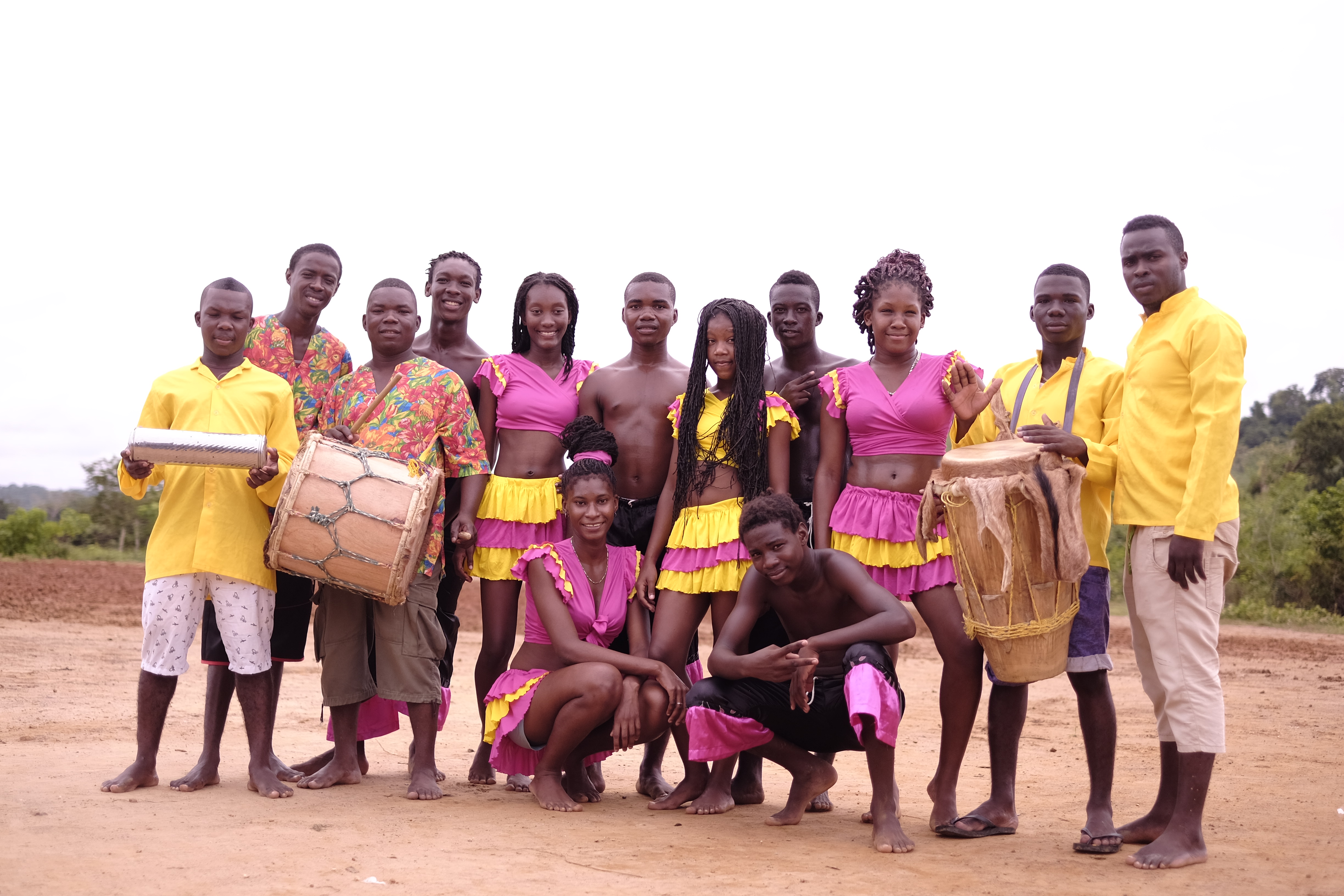
“I wanted it to feel like a maximal amount of information — like a dream, because for me, the experience felt very much like that…The experience was so saturated and so short and so intense that it felt almost unreal, “ he said.
For Kombilesa Mi, the collaboration with Garzón-Montano and Carrasquilla came at just the right time. Their music has been gaining momentum: They recently released an album called Asi Es Palenque and have been touring both nationally and internationally, sharing their home with the rest of the world. In “Punto,” they call out emblematic landmarks in Palenque — and the video collaboration has helped draw more attention to these places.
“It was a marvelous experience that has nurtured us and strengthened us,” Andrís Padilla Julio of Kombilesa Mi said. “And it’s given us huge results on both ends — through our help, they could release the video they wanted with Gabriel, and we also could release a great product for ‘Punto.’”
Check out more exclusive behind-the-scenes photos from the “Bombo Fabrika” shoot below. Gabriel Garzón-Montano is also releasing a Bombo Fabrika shirt with 100% of proceeds going to music programs in Palenque. Purchase the shirt here.
